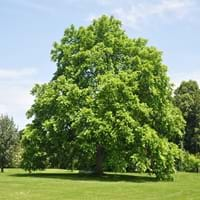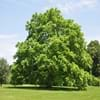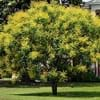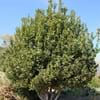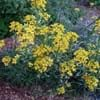Life Span
Biennial
Perennial
Origin
North America, United States, Northeastern United States, Mid-Atlantic United States, North-Central United States, Central United States, Canada
China
Types
Not Available
Greenstripe Vivax, Moso, Weavers Bamboo, Oldhamii
Habitat
Anthropogenic, Floodplains, Forests
Subtropical climates, Wet Woods
USDA Hardiness Zone
3-9
8-12
Sunset Zone
1a, 1b, 2a, 2b, 3a, 3b, 4, 5, 6, 7, 8, 9, 14, 15, 16, 17
H1, H2, 8, 9, 14, 15, 16, 17, 18, 19, 20, 21, 22, 23, 24
Habit
Oval or Rounded
Clump-Forming
Minimum Width
Not Available
Flower Color
Yellow green
Pale White
Flower Color Modifier
Bicolor
Bicolor
Fruit Color
Green, Brown
Not Available
Leaf Color in Spring
Light Green
Green
Leaf Color in Summer
Green, Dark Green
Light Green
Leaf Color in Fall
Yellow, Gold
Green
Leaf Color in Winter
Not Available
Green
Leaf Shape
Pinnate
Acicular
Plant Season
Spring, Summer, Fall
Spring, Summer, Fall, Winter
Sunlight
Full Sun
Full Sun, Partial Sun
Growth Rate
Slow
Very Fast
Type of Soil
Clay, Loam
Loam, Sand
The pH of Soil
Acidic, Neutral, Alkaline
Acidic, Neutral, Alkaline
Soil Drainage
Well drained
Well drained
Bloom Time
Late Spring, Early Summer
Not Available
Tolerances
Not Available
Drought
Where to Plant?
Ground
Container, Ground
How to Plant?
Seedlings
Grafting, Seedlings, Stem Planting, Transplanting
Plant Maintenance
Medium
Medium
Watering Requirements
Average Water Needs, Do Not over Water, Requires regular watering
Needs watering once a week, Use Mulches to help prevent water loss during hot and windy weather, Water Deeply
In Summer
Lots of watering
Lots of watering
In Spring
Moderate
Moderate
In Winter
Average Water
Average Water
Soil pH
Acidic, Neutral, Alkaline
Acidic, Neutral, Alkaline
Soil Type
Clay, Loam
Loam, Sand
Soil Drainage Capacity
Well drained
Well drained
Sun Exposure
Full Sun
Full Sun, Partial Sun, Partial shade
Pruning
Remove damaged leaves, Remove dead branches, Remove dead leaves
Do not prune during shooting season, Prune in late summer or fall, Remove damaged leaves
Fertilizers
All-Purpose Liquid Fertilizer
All-Purpose Liquid Fertilizer
Pests and Diseases
Red blotch
Black sooty mold, Mealybugs, Mosaic viruses, Powdery mildew, pythogens, Stem rot
Plant Tolerance
Not Available
Drought
Flowers
Insignificant
None
Flower Petal Number
Not Available
Single
Fragrant Leaf
Not Available
No
Fragrant Bark/Stem
Not Available
No
Foliage Texture
Coarse
Coarse
Foliage Sheen
Matte
Matte
Attracts
Birds, Squirrels
Beetles, Bugs, Mites
Allergy
Gastric, Pollen
allergic conjunctivitis, Asthma, Rash, Respiratory distress
Aesthetic Uses
Not Used For Aesthetic Purpose
Showy Purposes
Beauty Benefits
Good for skin
Not Available
Environmental Uses
Air purification, Shadow Tree
Agroforestry, Air purification, No fertilizer, pesticides, or herbicides needed
Medicinal Uses
Dysentry, Intestinal irritations, Small pox, Stomach pain
Aging, Anti-fungal, Antispasmodic, Digestive disorders, Obesity
Part of Plant Used
Sap, Seeds
Stem, Tree trunks
Other Uses
Application in Furniture, Decorative veneers, flooring, paneling, Herbicide
Economic Purpose, Traditional medicine, Used As Food, Used for woodware, Used in Furniture, Used in paper industry
Used As Indoor Plant
No
No
Used As Outdoor Plant
Yes
Yes
Garden Design
Edible, Shade Trees
Feature Plant, Screening / Wind Break, Tropical
Botanical Name
JUGLANS cinerea
BAMBUSA beecheyana
Common Name
Butternut
Beechey's Bamboo, Clumping Bamboo
In Hindi
Butternut Tree
बांस
In German
Butternut Baum
Verklumpung Bambus
In French
noyer cendré
clumping Bamboo
In Spanish
árbol de nogal
clumping Bamboo
In Greek
Butternut Δέντρο
συσσώρευση μπαμπού
In Portuguese
Árvore Butternut
bambu aglutinação
In Polish
butternut Drzewo
zbicie bambus
In Latin
Butternut ligno
clumping Bamboo
Phylum
Magnoliophyta
Magnoliophyta
Class
Magnoliopsida
Liliopsida
Order
Juglandales
Cyperales
Family
Juglandaceae
Poaceae
Clade
Angiosperms, Eudicots, Rosids
Angiosperms, Commelinids, Monocots
Tribe
Not Available
Bambuseae
Subfamily
Not Available
Bambusoideae
Number of Species
Not Available
Not Available
Season and Care of Butternut Tree and Clumping Bamboo
Season and care of Butternut Tree and Clumping Bamboo is important to know. While considering everything about Butternut Tree and Clumping Bamboo Care, growing season is an essential factor. Butternut Tree season is Spring, Summer and Fall and Clumping Bamboo season is Spring, Summer and Fall. The type of soil for Butternut Tree is Clay, Loam and for Clumping Bamboo is Loam, Sand while the PH of soil for Butternut Tree is Acidic, Neutral, Alkaline and for Clumping Bamboo is Acidic, Neutral, Alkaline.
Butternut Tree and Clumping Bamboo Physical Information
Butternut Tree and Clumping Bamboo physical information is very important for comparison. Butternut Tree height is 1,220.00 cm and width 1,220.00 cm whereas Clumping Bamboo height is 1,070.00 cm and width Not Available. The color specification of Butternut Tree and Clumping Bamboo are as follows:
Butternut Tree flower color: Yellow green
Butternut Tree leaf color: Light Green
Clumping Bamboo flower color: Pale White
- Clumping Bamboo leaf color: Green
Care of Butternut Tree and Clumping Bamboo
Care of Butternut Tree and Clumping Bamboo include pruning, fertilizers, watering etc. Butternut Tree pruning is done Remove damaged leaves, Remove dead branches and Remove dead leaves and Clumping Bamboo pruning is done Do not prune during shooting season, Prune in late summer or fall and Remove damaged leaves. In summer Butternut Tree needs Lots of watering and in winter, it needs Average Water. Whereas, in summer Clumping Bamboo needs Lots of watering and in winter, it needs Average Water.
